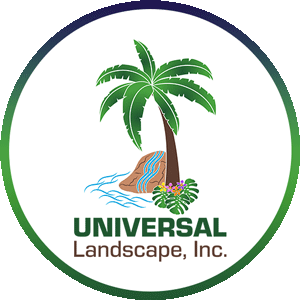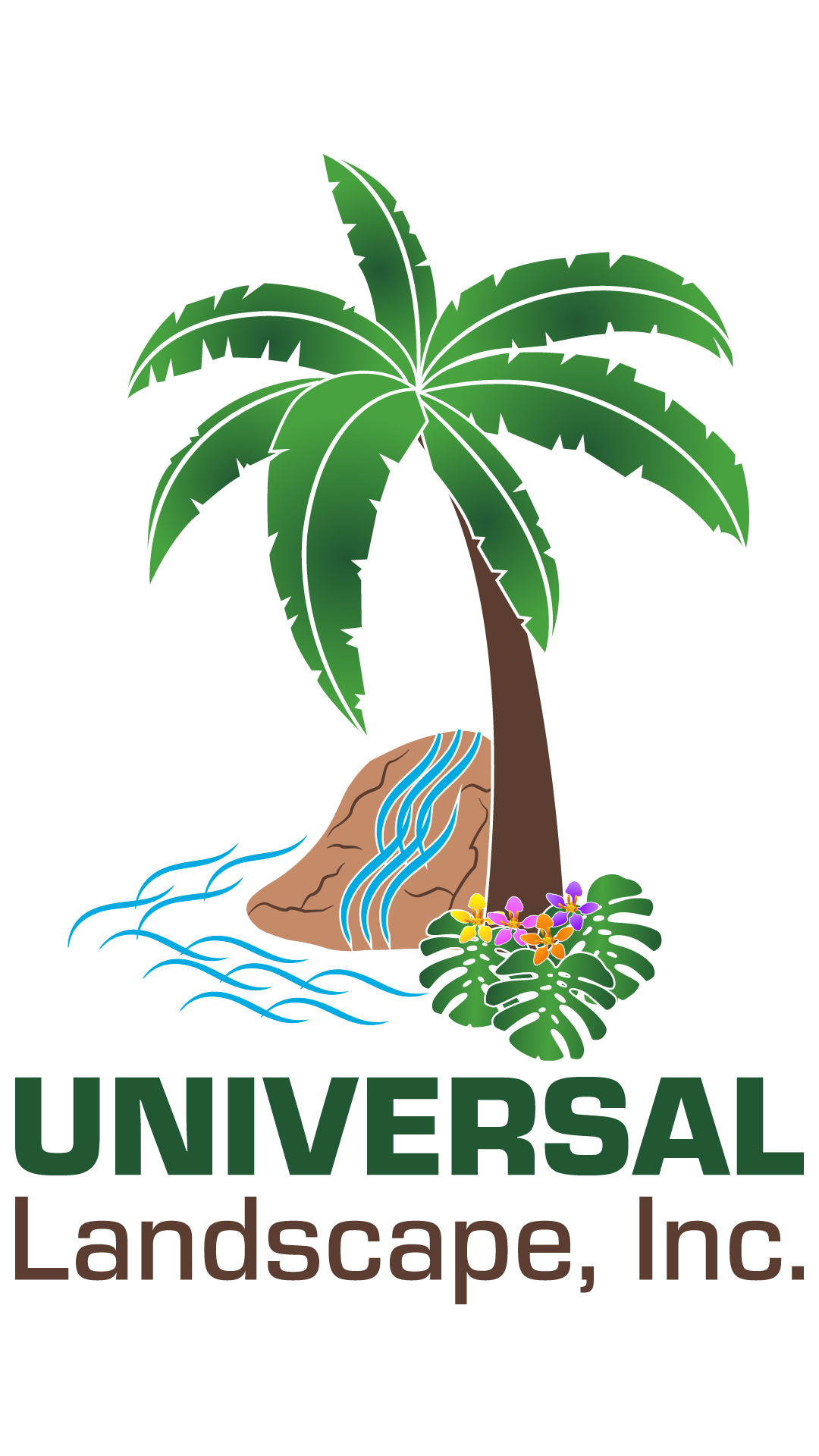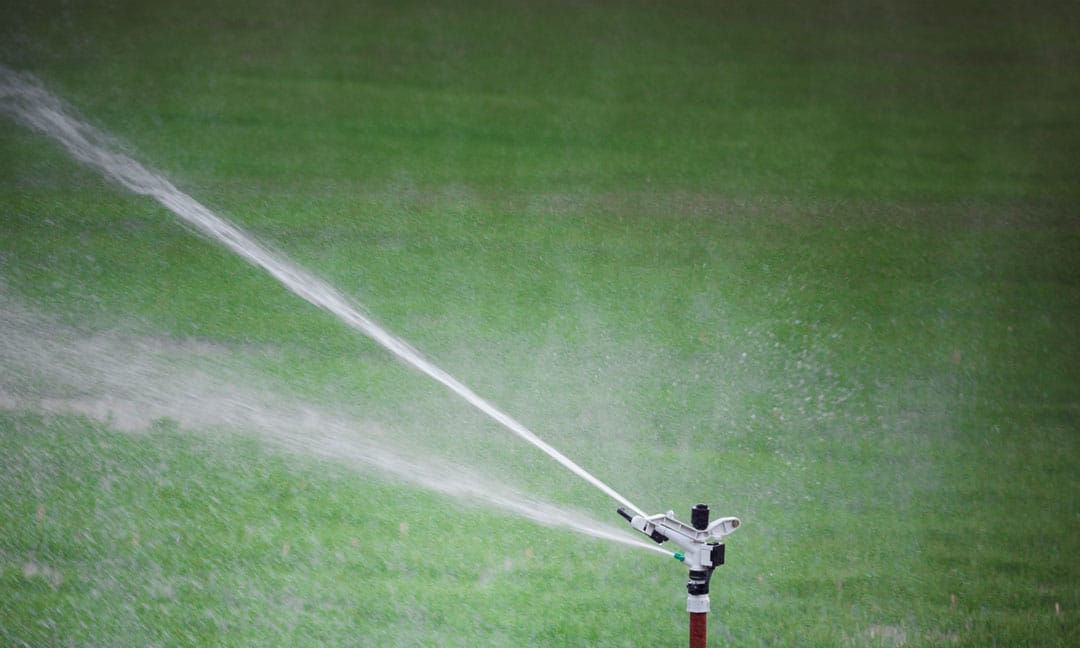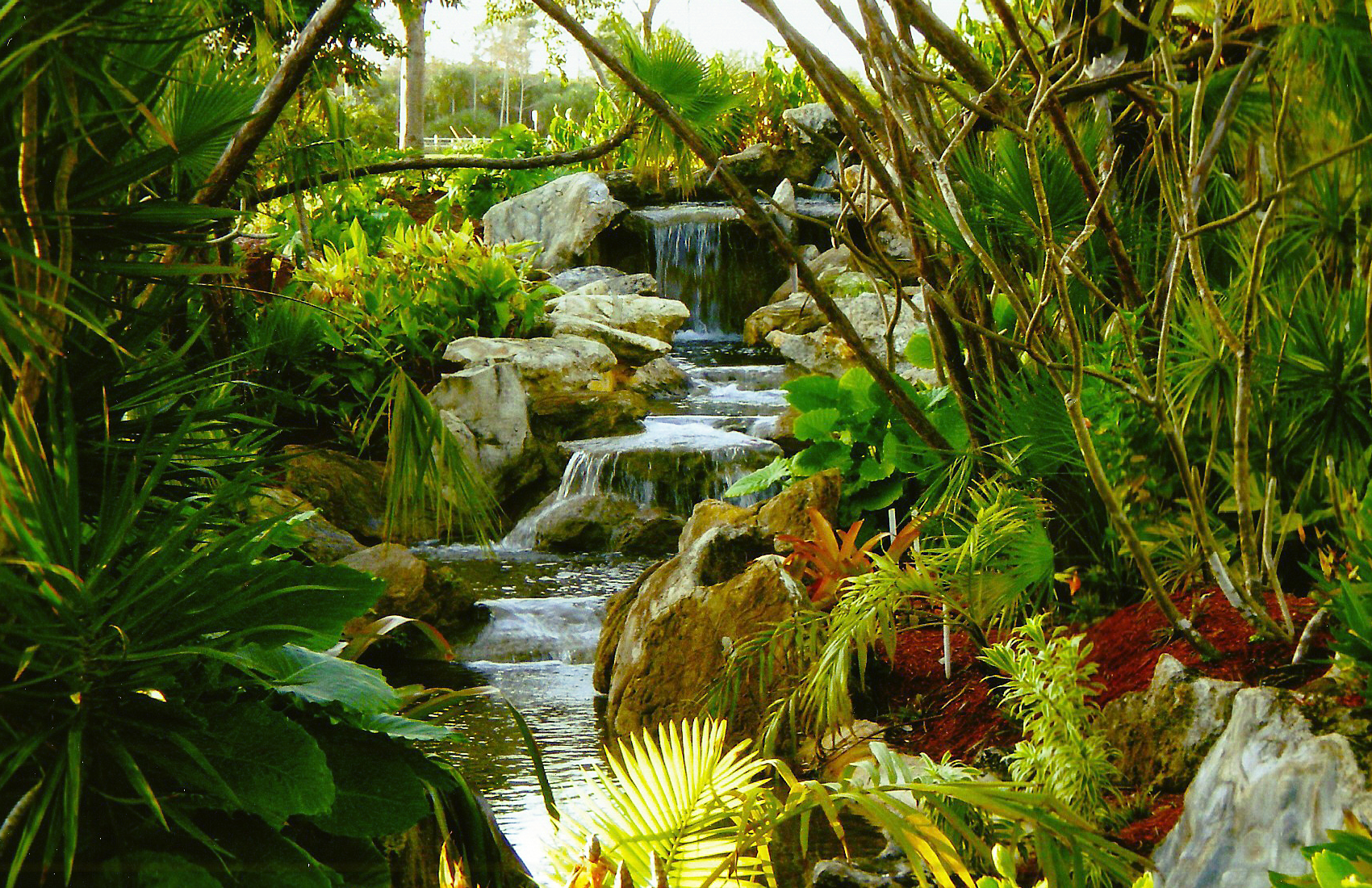
If your HOA controls the settings of what times your irrigation comes on and shuts off and how often it irrigates your property & your planning on renovating your landscape, a few important tips you should know to help make your new landscape project more successful.
NOTE : This article should prove helpful to those who own and operate their own irrigation systems to the points and timelines when your system should be checked and adjusted before, during and the points after your new landscape project has been installed.
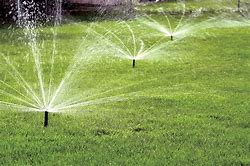
Right up front when your submitting your project to your HOA, you should receive a form to fill out. Often, they will also include rules about landscape guidelines. At the same time of requesting these forms for your project, or even before, you should request your HOA to perform an IRRIGATION WET CHECK at the same time.
It is very easy to not think down the road about the actual landscape’s health when you are inundated with paper work and requirements. To put it simply, your Hoa most often will ask you for a few simple things to submit for your new landscape project which we will list here.
What your HOA needs from you to approve your new Landscape Renovation Project
- You, the homeowner, will personally need to fill out the form of application to change your landscape.
- You will need to have a drawn out landscape plan on a copy of your survey (your landscape contractor should provide you with this once you provide your landscape contractor a copy of your survey).
- You will need a copy of your landscape contractor’s business license.
- You will need a copy of your landscape contractor’s workers comp insurance certificate.
- You will need a copy of your landscape contractor’s general liability insurance certificate.
Note: Very seldom will an HOA ask for anything more.
What to remember about your irrigation needs when you start talking with your HOA about your new Landscape Project
Now, the next stages is hustling to get the paperwork requirements we mentioned to your HOA. Many homeowner’s can get so preoccupied getting this together that they & their contractor may not remember to make sure that the irrigation is ok.
Many don’t even contemplate or tell their landscape contractor that they don’t personally have an irrigation timer that they set to water their own lawn and landscape. Easy to not think about as its not something that you don’t ever really deal with much as its taken care of others.
SO, IF YOU DON’T CONTROL YOUR OWN IRRIGATION SYSTEM FOR YOUR YARD, THIS IS AN IMPORTANT POINT YOU SHOULD ALWAYS TELL YOUR LANDSCAPE CONTRACTOR, RIGHT AT THE BEGINNING WHEN YOU FIRST MEET THEM TO TALK ABOUT YOUR NEW LANDSCAPE PROJECT.
By telling your landscape contractor up front that you don’t control your irrigation, you are helping to create a smoother project down the road, during the actual installation of the new landscape design & for helping the new landscape get off to the best and healthiest start possible after it has been installed.
Making sure your HOA schedules your First Irrigation Wet Checks & When You Need them & Make a point to tell your landscape contractor
Step 1 . When you are asking for the paperwork to submit your new landscape design to be reviewed by your Hoa for approval, or even before that when you begin thinking about your new landscape project (even better) – request an IRRIGATION WET CHECK to be performed.
This will tell your Hoa that you would like them to come out and inspect your irrigation system and make sure that it is completely working properly. What the WET Check should do : * Make sure that every single sprinkler head is working and spraying properly.
* Make sure that every zone works.
If there are any problems with the irrigation they should be noted and repaired or replacements made to get your system to proper working order.
This is so easy to overlook when chasing deadlines with some Hoa’s as they may only have 1 day a month with some Hoa’s while others may accept project applications at any time. Whichever style Hoa you have, once they accept your project submittal they may vary from a few days to a month to get back to you with an approval or decline with notations to make changes. While you are thinking of your desired timeline or your landscape contractor’s availability to do the job and about getting approval, easy to overlook testing the sprinklers.
Again, suggest getting the Irrigation Wet Check scheduled as soon as you start thinking about and actually start designing your new landscape project.
# 2 Schedule the Wet check when you can be home if at all possible. This will help you to see that it is being done thoroughly. If you don’t, the only way you would know for certain that your irrigation system is working properly is if you walk around your yard when the irrigation system kicks on. And you might not be sure what time it comes on. If not, ask your Hoa is our suggestion.
Your new landscape project is approved, when to schedule your next Irrigation Wet Checks
NOW AT THIS POINT, WE’LL FIGURE YOUR NEW LANDSCAPE PROJECT HAS BEEN APPROVED BY YOUR HOA, YOUR LANDSCAPE CONTRACTOR HAS PROVIDED YOU WITH A DATE THAT YOUR PROJECT WILL BEGIN. WHAT TO DO NOW ?
# 3 Tell your HOA you need them to schedule to have your Irrigation system come on the morning your landscape project begins. This should be scheduled at a time that will work for your landscape contractor so they can inspect the irrigation system and mark out your sprinkler heads when they start the project.
Scheduling your 3rd and should be final Irrigation WET Check & what needs to be done
This request for a wet check may be the last one you need possibly and this one is to ensure again that the irrigation system is working properly. This should occur right after or during the actual plant or tree installation. Check with your landscape contractor for the timing for best results when it should be performed.
This 3rd wet check is to make sure your irrigation system is providing proper watering coverage after the new landscape is installed. Making sure that if any irrigation heads need to be moved to accomodate the new changes in your landscape, that those heads are moved at that time.
Your landscape contractor should tell you ahead of time when your HOA should have the community irrigation contractor to come out again.
A point of note is that any newly installed tree or palm should have a “Bubbler” placed at the bottom of it by the root ball to help ensure a better watered and better growing new palm or tree.
This is the point of the 3rd Irrigation WET Check and at the same time, a courteous irrigation company will show concern that your new landscape is being increased to meet the new immediate watering needs directly in the weeks and first months following the new landscape is installed.
Making sure your HOA is concerned and taking care of your new watering needs for the first 2 to 3 weeks and the first months after the new landscape is installed
We have articles on this subject in different places and they are in line with the allowances of the South Florida Water Management district’s guidelines for watering needs and allowances for new landscape installations.
There is no period normally during a landscape’s life that is as important as the time directly upon and following a new landscape installation and the South Florida Water Management addresses this with increased recommendations and allowances for increased watering during this time period. Even during periods of different levels of drought, the SFWD still makes special considerations and guidelines for new landscape installations.
For more official policies on watering regulations during the severe times of drought imposed restrictions, best to check the SFWD South Florida Water Management Districts website directly.
How often and for how long should the watering be set for my landscape by my HOA
- 45 minutes to 1 hour per zone for each area of new landscape installations, every day for the first 2 to 3 weeks is most desirable. If we get a good rain during any day, that will often be better than the irrigation coming on. This initial daily watering period should last for 2 to 3 weeks.
- Second setting : after the first 2 to 3 weeks, best to skip a day and continue to water 45 minutes to 1 hour EVERY OTHER DAY until the 3 month mark.
If there is going to be a problem with your landscape it will usually show in those first few months. After the first few months the goal is to get to a once or twice a week watering schedule for typically 30 to 45 minutes. The reduced watering helps to train the root systems to search for water more on their own and in doing so help them to become more deeply rooted, more xeriscaped, self serving and strong.
Too much water regularly over the longer term in the years after installation keeps the roots shallow and weak.
Note, not all landscapes are the same and some trees or palms may require more water than others. They become more deeply rooted, more xeriscaped, self serving and strong.
Also, not all neighborhoods or even neighboring properties have the same soil densities or challenges. This will affect the amount of water needed as well.
For example poorly draining properties or those that flood often will require less water because of their dense soils than those more porous soil properties that drain well and do not have flooding issues. Just a note and food for thought, irrigation systems should always be tweaked to meet the conditions of the property and the landscape materials needs they directly serve.
The points to make sure you have WET Checks done on your irrigation system AFTER your new landscape project has been installed
Just because the new landscape has been installed does not mean the concerns for your irrigation system are over. During adjustments and new installations, breaks can happen during the landscape job or the moving of lines and heads and dirt, silt or stones can get in and clog the lines.
Best to keep an eye on the system in the weeks following the installation of your landscape even after the last Wet check performed after the landscape was installed. Even if the irrigation is working properly during that final check, days, even weeks later some small particles can get into the sprinkler heads or bubblers and clog those heads from working properly. This does not always happen but any time there are repairs or added lines or sprinklers heads there is a chance for dirt or silt to get into the lines during those adjustments.
If you don’t see anything but wish to be sure everything is ok, have another wet check done a couple of weeks after the last wet check upon planting was performed if you wish to take extra care. If you don’t see any problems, good. If you’re not able to see the system on and want to be sure, check again.
Long term need for Irrigation maintenance & Wet Checks
As time goes on there are a number of things that can happen or go wrong with your irrigation that can affect its ability to work properly. Dirt or silt can get in the lines, especially if drawing from a lake or pond and the intake line is near the bottom of the lake or canal. This might require the intake line to be elevated if you have this problem of clogged heads quite often.
Lawn maintenance crews can easily break irrigation heads during their work over time. Best to check to make sure the irrigation is working periodically in the months and years after a new landscape is installed.
The first months and years after a new landscape is installed has a great influence on the long term health, vitality and longevity of your landscape. Fertilizing and trimming properly are also main concerns through the first years especially and we have articles here on our site discussing this in more detail as well.
Checking to make sure your irrigation is working properly in the months and at least quarterly after your landscape is installed only helps to ensure that your investment is being cared for in the watering needs it has and your landscape has its best chance of looking great.
Biggest mistake after the first few months that people make is to water too much and too often. Long term, after the first few months, should only be watering typically once to twice a week, 3 times at most. Can’t stress this point enough to not make this mistake, long term, DON’T OVER WATER !
Re-capping Main points of this article
- Get a wet check done as soon as you begin thinking about or planning to submit your landscape project to be approved. Many benefits and a much smoother job and better insurance your landscape will do well. Also, put them on notice of what your new watering needs will be when the landscape project is installed for the first weeks and months afterwards.
- Tell your landscape contractor as soon as you begin talking about the design and what you’d like done that you don’t control your irrigation system, the HOA controls it.
- Coordinate with your landscape contractor and your HOA (or put them in touch with each other) that the irrigation is tested and turned on the morning the landscape project is to begin.
- Schedule your 3rd (usually final) Irrigation wet check as your landscape contractor tells you when they need them to come out for the final adjustments and testing of your irrigation system. This is important to coordinate on the time schedule and convenience of your landscape contractor as much as possible to make sure that irrigation heads are moved and adjusted and working properly when the new landscape is installed.
- Have your HOA increase your watering to daily for the next 2 to 3 weeks at 45 minutes to 1 hour right after installation. Then increased watering over normal through the first 3 months as listed above and at any time approved by the South Florida Water Management District. This helps ensure the best possible start for your new investment in your new landscape and a helpful and conscientous property manager, HOA and irrigation contractor should only want the best to help protect your investment as their client, customer, resident as well.
- In the weeks and months following your new landscape installation, keep and eye on your irrigation to make sure its working properly. Call for Wet Checks in the months following or on a quarterly basis. Many reasons to check as many things can cause your irrigation to not work after a new landscape has been installed.
